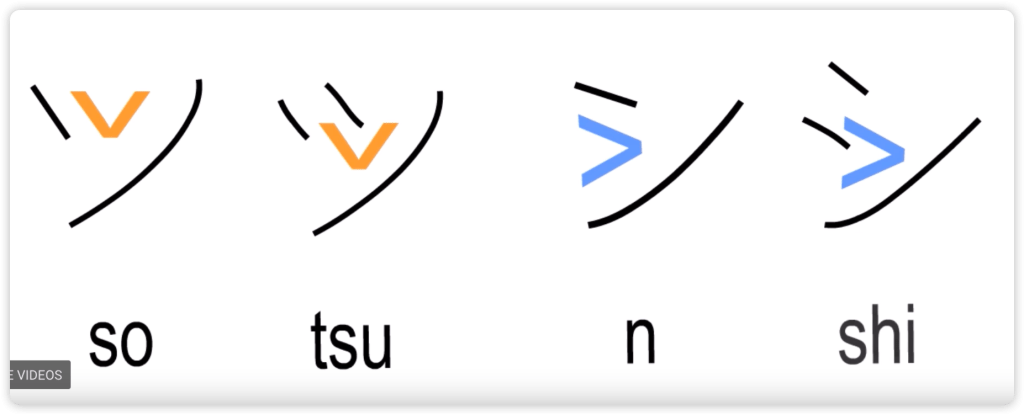These four Katakana characters: シ (shi), ツ (tsu), ソ (so), and ン (n) — are often confusing because they look similar, but each has a different sound, stroke order, and usage. I think we should learning this first before we can continue learning next character of Katakana.
Let’s explore everything important about them clearly:
| Katakana | Hiragana | Romaji | Meaning |
|---|---|---|---|
| シ | し | shi | “shi” in “shampoo” |
| ツ | つ | tsu | “tsu” in “tsunami” |
| ソ | そ | so | “so” in “soda” |
| ン | ん | n | “n” as a nasal consonant |
Key Differences (Shape & Stroke Direction)
| Character | Strokes go… | Tip to remember |
|---|---|---|
| シ | Top-left to bottom-right, vertical dots | Like a smiling face 😊 |
| ツ | Top-right to bottom-left, vertical dots | Like a teardrop face 😢 |
| ソ | Similar to シ, but with horizontal line | Looks more “open” than シ |
| ン | Similar to ソ, but sharper angle | Looks like a checkmark ✔️ |
Pronunciation
- シ (shi): sounds like “she”
- ツ (tsu): like “tsu” in “tsunami” (not just “su”)
- ソ (so): like “so” in “soda”
- ン (n): nasal “n” sound; sometimes like “m” or “ng” depending on next letter (e.g., コンピューター)
Common Katakana Words
シ (shi):
- シャツ – shatsu (shirt)
- システム – shisutemu (system)
- ショッピング – shoppingu (shopping)
ツ (tsu):
- ツアー – tsuā (tour)
- ツナ – tsuna (tuna)
- ツイート – tsuīto (tweet)
ソ (so):
- ソファ – sofa
- ソース – sōsu (sauce)
- ソーラー – sōrā (solar)
ン (n):
Used at the end or middle of many Katakana words.
- コンピュータ – konpyūta (computer)
- メロン – meron (melon)
- パン – pan (bread)
Don’t Confuse!
| Similar-looking | But different! |
|---|---|
| シ (shi) ↔ ツ (tsu) | Direction of strokes |
| ソ (so) ↔ ン (n) | Tilt and position |
| シ ↔ ソ | シ has dots, ソ is more like “Z” |
The video bellow is easiest way to learn the difference when I find from Youtube.
Finally :
